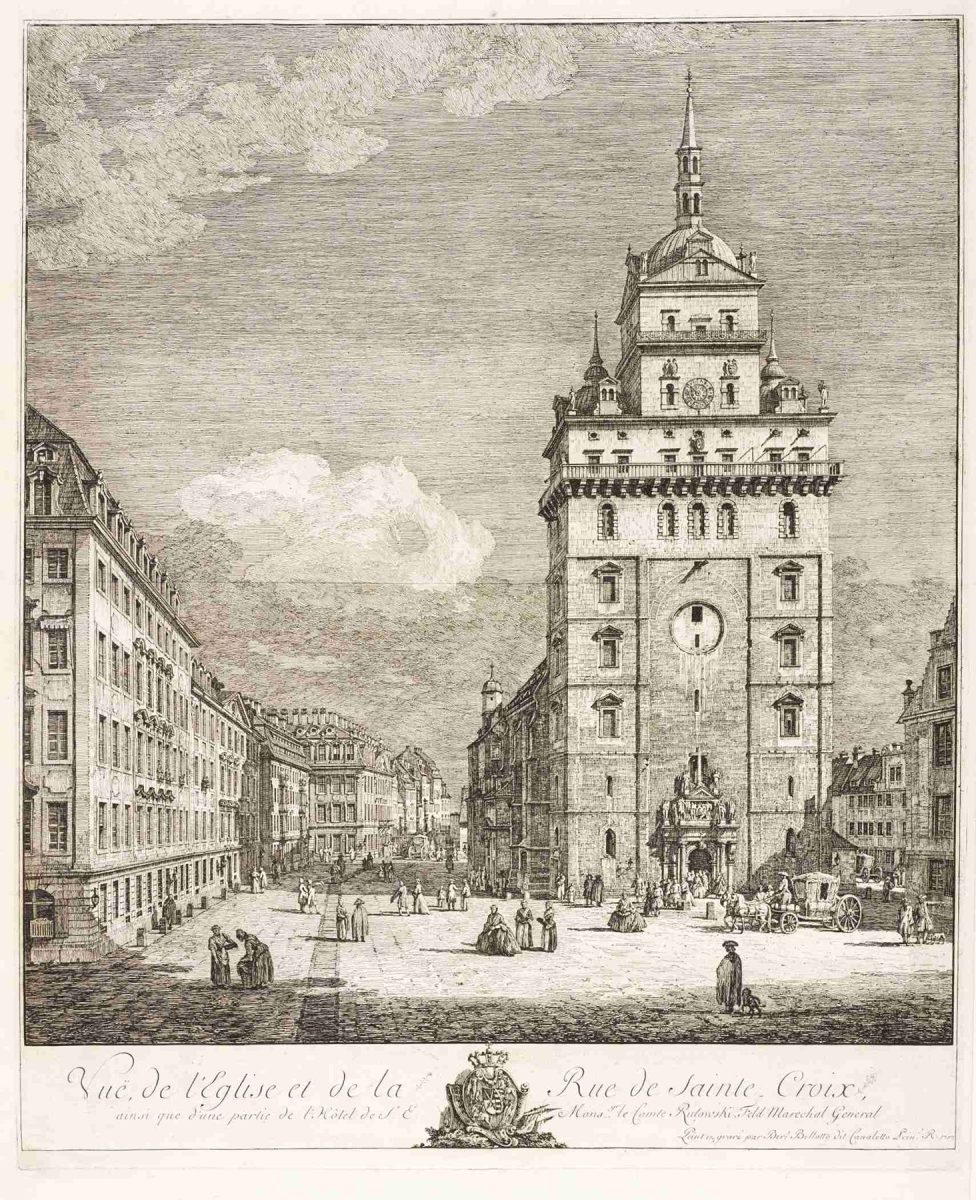The Fondation William Cuendet & Atelier de Saint-Prex owns a set of 23 engravings by the great Venetian vedutisti Bernardo Bellotto, including his complete series of eight Italian etchings (1741-1742) and his large views of Dresden. All these plates were among the eighteenth-century Venetian etchings bequeathed to the Foundation by Gérard de Palézieux.
With the renowned Canaletto (1697-1768) as his uncle, Bernardo Bellotto was positioned at birth for a successful career in Venice, and he trained as a painter in Canaletto's studio. Working in the veduta tradition of his illustrious relative, he tried his hand at printmaking, producing eight small etchings in which Canaletto’s influence is clearly evident. On the latter's advice, Bellotto spent several months in Rome in 1742, perfecting his craft painting the city and its surrounding countryside. From 1744 to 1745, he travelled through several regions of northern Italy (Lombardy, Turin, Verona), where he painted views that marked a turning point in his production. In 1747, he decided to leave Venice and try his luck abroad.
From then on, Bellotto’s career was closely linked to his successive engagements with various European courts. He first landed in Dresden, where he became the favoured artist of the court of Frederick-Augustus II, Elector of Saxony. His large-format etchings of Dresden and Pirna date from this period. But this patronage was interrupted by the Seven Years' War (1756-1763), and in 1759, with Dresden occupied by the Prussian army, Bellotto left the city and went to Vienna, where he spent two years working on commissions for the Empress Maria Theresa. In 1761, after a brief stay in Munich, the artist returned to Dresden. Although his house had been destroyed during the conflict, Bellotto spent a few more years on the banks of the Elbe, where he produced two etchings depicting the scars of the war and two engravings of the fortress of Königstein. The artist then moved to Warsaw in 1767, where he was appointed court painter to King Stanislas II of Poland. It was during this last Polish period that Bellotto produced his last major series, of views of Warsaw. He died in that city on November 17, 1780.


